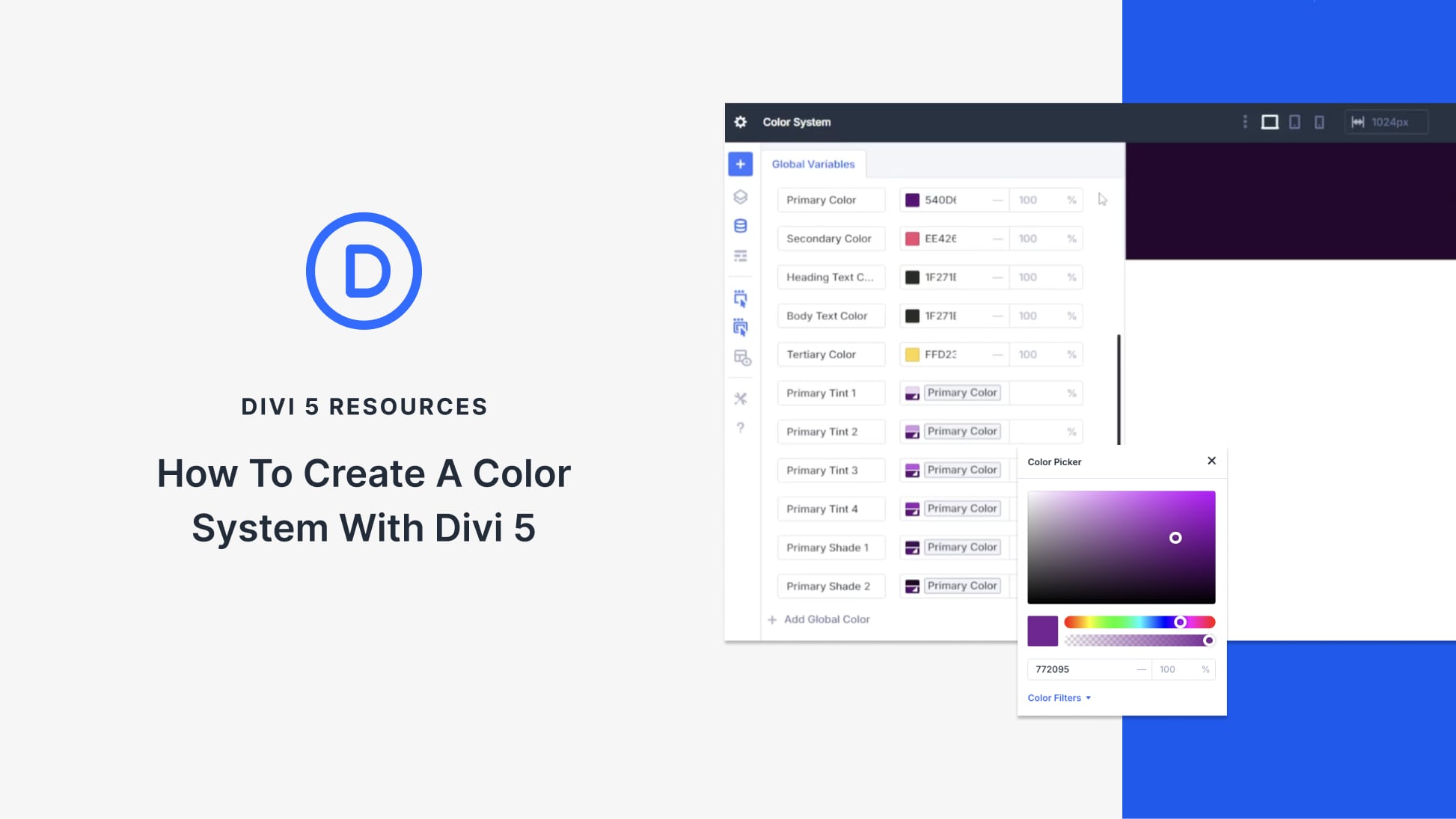Blog
How To Create A Color System With Divi 5

Creating a Color System with Divi 5: A Comprehensive Guide
Introduction
In the world of web design, color plays a crucial role. It not only enhances the aesthetic appeal of a website but also influences user experience and brand perception. Divi 5, a robust theme from Elegant Themes, allows designers to create an effective color system that aligns with their brand identity. This guide will walk you through the steps to establish a cohesive color scheme using Divi 5, making your website visually stunning and engaging for users.
Understanding Color Theory
Before diving into Divi 5, it’s essential to grasp the fundamentals of color theory. Colors evoke emotions and can significantly impact user behavior. Here are a few concepts to consider:
Color Wheel Basics
The color wheel is a visual representation of colors arranged in a circle. It consists of primary, secondary, and tertiary colors. Understanding this wheel can help you create harmonious palettes.
Color Harmonies
These are combinations of colors that work well together. Some popular schemes include:
- Complementary: Colors opposite each other on the wheel.
- Analogous: Colors next to each other, creating a serene effect.
- Triadic: A triangle formation on the wheel, yielding vibrant layouts.
Familiarizing yourself with these concepts will enrich your color system.
Setting Up Your Divi 5 Environment
Before you begin crafting your color system, make sure you have the latest version of Divi 5 installed. After installation, follow these steps to set up your workspace:
-
Create a New Theme Builder Template:
- Navigate to the Theme Builder in the Divi settings and start a new template. This template will be the canvas for your color system.
- Access the Visual Builder:
- Use the Visual Builder to access the design elements easily. This tool allows real-time adjustments and previews.
Choosing Your Primary Color
Your primary color is the cornerstone of your color system. It’s the hue that reflects your brand’s personality and will be prominent throughout the design.
Selecting the Right Shade
When selecting a primary color, consider the following:
-
Brand Identity: Does the color represent your brand accurately? For instance, blue often conveys trust, while red can evoke excitement or urgency.
- Audience Reaction: Research how your target audience perceives various colors. User testing can provide valuable insights.
Implementing Your Primary Color in Divi 5
Once you’ve chosen your primary color, implement it in Divi 5 as follows:
- Go to the Divi Settings panel.
- Select the “Theme Options” tab.
- Click on “General Settings” and find the option for color settings.
- Input your primary color code (HEX or RGB format).
Creating a Secondary and Accent Color Palette
Your secondary and accent colors enhance the primary color, adding depth and versatility to your design.
Choosing Secondary Colors
Select one or two secondary colors that complement your primary color. These will be used for backgrounds, headers, and other design elements.
Selecting Accent Colors
Accent colors are typically brighter and can be used sparingly to draw attention to key areas, such as calls-to-action (CTAs) or important information.
Defining Color Uses and Guidelines
A clear guideline for color usage ensures consistency across your website. Here’s how to define the roles of your selected colors:
Color Application
- Headers and Footers: Use your primary color for headings to provide a strong visual presence.
- Backgrounds: Use secondary colors for section backgrounds to create contrast and hierarchy.
- CTAs: Accent colors should be reserved for buttons and important links to encourage user interaction.
Implementing Your Color System in Divi 5
Now that you have chosen your colors and outlined their uses, it’s time to implement your color system in Divi 5.
Utilizing the Global Color Settings
Divi allows you to set global colors for your entire site, ensuring consistency. Here’s how to do it:
- Open the Customizer: Navigate to the Divi Theme Customizer in your dashboard.
- Global Colors Section: Find the “Global Colors” option and enter your primary, secondary, and accent color codes.
- Save Changes: Make sure to publish and save your settings.
Testing Your Color System
After implementing your color system, testing it is crucial. A simple way to evaluate the effectiveness is to gather feedback from your target audience:
User Feedback
Provide a way for users to give feedback on the new design. This could be through a survey or a simple feedback form.
A/B Testing
Consider running A/B tests to compare different colors or layouts. This approach helps to determine which options resonate best with your audience.
Accessibility Considerations
It’s essential to ensure that your color choices are accessible to all users, including those with visual impairments. Here are some tips:
Color Contrast
Ensure there is sufficient contrast between text and background colors. Use tools like the WebAIM contrast checker to evaluate color accessibility.
Alternative Text
Incorporate text labels or icons alongside color-coded elements. This practice enhances usability for those who might have difficulty distinguishing colors.
Maintaining Your Color System
As your website evolves, your color system may also need updates. Schedule periodic reviews of your color palette to ensure it still aligns with your brand and audience preferences.
Conclusion
Creating a color system with Divi 5 is both an art and a science. By understanding color theory, selecting your colors thoughtfully, and implementing them effectively, you can enhance your website’s overall aesthetic and functionality. Remember, consistency is key, and regular testing will ensure your color system continues to resonate with your audience. By following this guide, you are well on your way to crafting a stunning and cohesive website with Divi 5.
